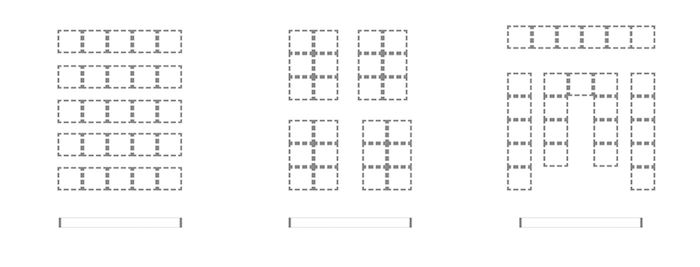It’s that time of year again. The school gates have opened, and teachers and students are heading back in to the classroom. And with a new school year comes new stationery, fresh books, renewed classroom displays and of course, new seating plans. But what is the best seating plan to use to get the most out of your lessons?
Setting the seating plan can feel like a nuisance but switching up your classroom can have a significant impact on class outcomes with clever seating arrangements improving concentration and engagement. After all, you wouldn’t sit both your mother and mother-in-law together at your wedding knowing that they usually butt heads, so don’t make the mistake of putting students next to each other who are bad influences on each other, creating a headache for you and disrupting the learning of the rest of your class.
So what’s the best arrangement? Do you go with rows or groups? And do you separate by gender or ability? Here’s our ultimate guide to getting your class seating plan right.
Getting Out of Bad Habits
As a teacher, there are so many demands on you already, especially at the beginning of a busy new year or term. The seating plan can feel like one thing you just want to get out of the way so you can get on with everything else. But this isn’t about making your classroom pretty (though that is nice!)- you need to look at arranging your classroom as an investment, setting the year off to a good start and ensuring the most effective environment for future lessons.
We all know that letting friends sit together can be a recipe for disaster. But resigning to simply placing students in alphabetical order or boy/ girl order and leaving it for the rest of the year isn’t always the right option either. You also shouldn’t remain rigid with your seating plan. If certain students aren’t working well together and it’s disrupting lessons, a table switch-up at any point in the year can do the whole class good.
A good seating plan enforces a consistent routine and reduces low-level disruption, saving you time and energy in the long-run.

Arranging the Classroom
Finding the right seating plan for you depends on your teaching style and the types of lessons you prefer to lead. Let’s take a look at some of the most common classroom arrangements. Some work better than others depending on your teaching style.
Simple Rows
The most traditional form of classroom arrangement. Rows work well for individual work but can limit capacity for group and co-operative work. It can also be difficult to move around the classroom and help specific students when organised in rows. There is the option of paired rows which allows pupils to work in pairs or small groups while still uniformly facing the front, reducing the temptation of distraction.
Groups or Clusters
Grouped tables tend to be the favourite of most teachers. Grouped or clustered classroom seating tends to work better for lessons that involve a lot of group work rather than individual work. In lessons that benefit from small discussions, group mind maps and projects, this seating plan is a great fit. It can work well in lessons like English, Citizenship and Science. However, having some students facing away from you and towards each other can cause some problems with more temptation for distraction as well as students having to turn to see the board.
Horseshoe or Circle
This arrangement can work very well in lessons like English, History, R.E. and Philosophy because it creates a seminar-like environment, encouraging whole class discussion and debate. A horse shoe or circle also has the benefit of allowing everyone to see the front without being restricted to straight rows. It is also easy to move around the classroom and allows you to be able to help individual students while still being aware of what’s going on in the whole class.
Combination
Once you know your students well, you will know who works well together and who doesn’t. As you become more familiar with your class, you can let your classroom arrangement evolve naturally, with some students arranged in rows and other in groups, for example. Experiment and see what works.

Separating Students
After you’ve decided on a class arrangement, you next need to decide on how to separate individual students in to the plan. Whether you decide to separate students by gender, ability or a random mix, there are a number of apps out there that can do the logic for you.
Gender
Separating students in to boy/ girl order is an old favourite but it may not be the most effective in reducing distraction and low-level disruption. It may work relatively well for younger students but is usually less effective with older students.
Ability
Many classes benefit from equal distribution of pupils based on ability. The idea being that you arrange the class with an equal mix of higher and lower ability students, allowing lower ability students to benefit from the influence and support of higher ability students, aiming to lift the overall quality of learning for the whole class. Allowing students the opportunity to teach each other also boosts their retainment of knowledge.
Influences
When deciding which students to put together, it goes without saying that you should separate those with negative influences on each other and try to find matches that have a positive influence on one another with limited opportunity for chatter and low-level disruption. This can come over time as you get to know students individually.
Getting in to Good Habits
There are a couple of good habits you should get in to when it comes to your class seating plans. The first is to remain consistent. Keep a hard copy of your seating plan for reference, this can also be very helpful for supply teachers who don’t know your class or where they usually sit. Try to include a bit of detail, such as pictures of students, pupil premium, SEN and medical info. That way, important information is kept fresh for you to reference and remember and also gives unfamiliar teachers a heads up about any specifics they might need to know.
It’s also a good idea to make space for a couple extra seats if possible. It’s a nightmare when you’ve just finished perfecting your seating plan to find out that you’ve got a couple of last-minute pupils joining your class!
Which seating plan works best for you? Ask other teachers, experiment and note the differences in behaviour and engagement. A good seating plan could be the solution to reducing off-topic classroom chatter, low-level disruption and distractions. Putting the time in to organising a seating plan at the start can save you a lot of time and hassle in the long-run.










